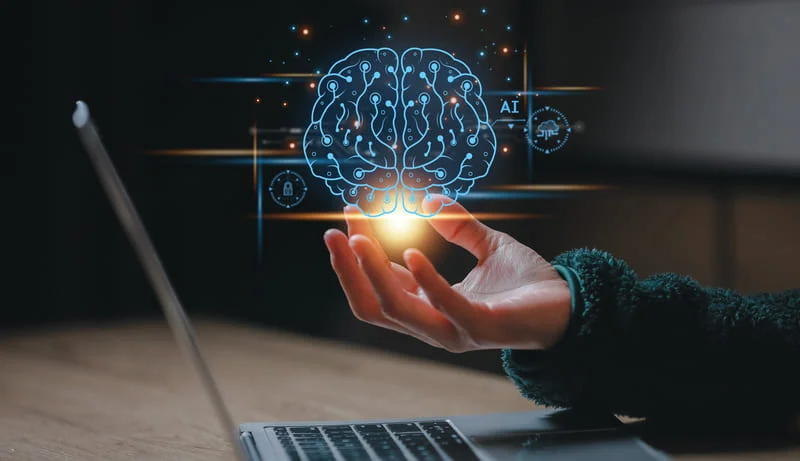In study , the multimodal automated disease classification system uses two types of activation maps to predict whether the person is healthy or has autism. Rakić et al. suggested a technique which is based on a system composed of autoencoders and multilayer perceptron. Because of a multimodal approach https://www.globalcloudteam.com/ that included a set of structural and functional data classification classifiers, the highest classification precision was 85.06%. In study , advanced deep-learning algorithms are proposed where HPC solutions can increase the accuracy and time of broad fMRI data analysis significantly.
We bring transparency and data-driven decision making to emerging tech procurement of enterprises. Use our vendor lists or research articles to identify how technologies like AI / machine learning / data science, IoT, process mining, RPA, synthetic data can transform your business. Consider introducing additional controls for low confidence cases in predictions where humans outperform the model at a reasonable cost. It may sound counter-intutive to be using models in areas where humans are better. However, due to cost considerations, models perform tasks where humans are more capable.
Binary Classification and Precision
Since none reflects the “absolute best” way to measure the model quality, you would typically need to look at them jointly, or consciously choose the one more suitable for your specific scenario. The costs of false positives might still be substantial. In extreme cases, they can make the model useless if you have to review too many decisions and the precision is low. When evaluating the accuracy, we looked at correct and wrong predictions disregarding the class label. However, in binary classification, we can be “correct” and “wrong” in two different ways.

In pattern recognition, information retrieval, object detection and classification , precision and recall are performance metrics that apply to data retrieved from a collection, corpus or sample space. As a measure, Precision is defined as the proportion of correct positive predictions of all cases classified as positive. In our example, this is the percentage of real bank robbers in relation to all bank visitors rated as robbers. In the multi-label case, precision and recall are usually applied on a per category basis. That is, if you are trying to guess whether a picture has a cat or dog or other animals, you would get precision and recall for your cats and dogs separately. Similarly, if you want to get recall for cats, you take the number of times you guessed correctly it was a cat over the total number of times it was actually a cat.
What is accuracy and precision in machine learning?
Precision tells us how often the model is right when it predicts something as positive. However, there are scenarios where you may want a model with higher precision. For example, you may have a fire spell that drains a lot of your energy and you want to use it sparingly.

Finally, divide that number by all of the patients whose status was known for sure (i.e., those who were definitely diagnosed). When calculating these advanced modeling metrics, a tip is to note the split in your dataset. As discussed in the section above, the first step to understanding your modeling metrics is fully understanding your business problem. We’ll also walk you through how to improve your machine-learning model process, where you’re not just blindly trusting metrics. The best models strike a balance between accuracy and precision, which is why it is important to tune hyperparameters such as the regularization parameter in order to find the best possible model. That means that out of every 100 predictions, 90 of them are correct.
In classification
The precision measures the model trustiness in classifying positive samples, and the recall measures how many positive samples were correctly classified by the model. The recall is calculated as the ratio between the number of Positive samples correctly classified as Positive to the total number of Positive samples. The recall measures the model’s ability to detect Positive samples. The precision is calculated as the ratio between the number of Positive samples correctly classified to the total number of samples classified as Positive . The precision measures the model’s accuracy in classifying a sample as positive. To fully evaluate the effectiveness of a model, you must examineboth precision and recall.
- After summoning our machine learning model, we approach the village and begin the battle.
- With the COVID-19 outbreak, the global health system had been faced a life-threatening infection with a wide range of symptoms and complications.
- Although we do aim for high precision and high recall value, achieving both at the same time is not possible.
- As such, accuracy is a better measure of overall performance, while precision is a better measure of model refinement.
This will give you an accurate estimate of how well your algorithm detected positives among all possible positives (i.e., all patients). It measures a model’s ability to detect positives—the higher its recall, the more positives are detected. From all the classes we have predicted as positive, 69.15% are actually positive.
Examples to calculate the Recall in the machine learning model
Out of the 30 monsters who we predicted were weak against wind, we were correct 24 times resulting in 80% precision (24/30). Cross-validation is a mathematical method for assessing https://www.globalcloudteam.com/glossary/accuracy/ master learning abilities. The K-fold validation method is employed for validation. In the K-fold approach, the entire dataset serves as both training and testing.

You can run your predictions without writing a single line of code. Every machine learning model is wrong sometimes, and that is the fact. Imagine that our objective is to develop a machine learning model that can predict the presence of cervical cancer as best as possible. High accuracy and low precision mean that the classification algorithm is making a lot of correct predictions.
How Do We Decide Which Modeling Metric We Want To Improve?
In the above image, we have only two positive samples that are correctly classified as positive while only 1 negative sample that is correctly classified as negative. Hence, in the last scenario, we have a precision value of 1 or 100% when all positive samples are classified as positive, and there is no any Negative sample that is incorrectly classified. But before starting, first, we need to understand the confusion matrix concept.
He holds a Master’s degree in Physics from the University of Zagreb. In 2010 Hrvoje founded Qualia, a company that created BusinessQ, an innovative SaaS data visualization software utilized by over 15,000 companies worldwide. Recall is likewise essential; when trying to make sense of data, you want to know if the classifier or predictor is identifying all the relevant information. Ensemble methods can be very powerful, but they are also more complex than other techniques and require a lot of data. Voting and averaging are two of the simplest ways to implement ensemble methods, while stacking is a complex technique that involves combining models using another algorithm. No-code machine learning for everyday business users.
Machine Learning Model Accuracy
Here is an example of the labels for seven samples used to train the model. These are called the ground-truth labels of the sample. In other words, you would treat false negative errors as more costly than false positives.